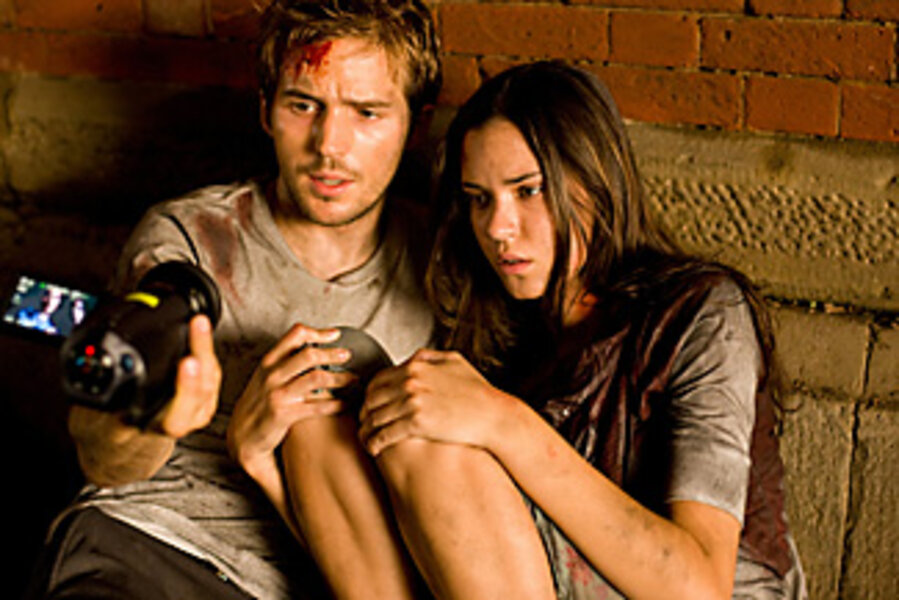Trend spotter: At the movies, the end is nigh...
Loading...
Apocalypse, now? A spate of science-fiction films has moviegoers practicing the "duck and cover" drill in cinema aisles.
After the release of "I Am Legend," in which a pandemic turns the concrete jungle of New York into, well, a jungle, viewers have packed theaters to see the gigantic beast of "Cloverfield" (below) play a deadly game of domino-toppling with Manhattan's skyline. Similarly, M. Night Shyamalan's imminent "The Happening" depicts an apocalypse and next year's "The Road" – based on Cormac McCarthy's novel – finds Viggo Mortensen roaming a scorched Earth where the survivors are cannibalistic marauders. (By contrast, the world of "Mad Max" seems like the Club Tropicana.) Even PIXAR's June release, "WALL•E," is set 700 years after mankind has been wiped out.
Why these depictions of the planet going the way of Pompeii? The films may reflect societal fears, such as headlines about the East vs. West clash of civilizations and global warming.
"Dystopian science fiction always comes up when people feel anxious," says Jonathan Taplin, professor of communications at the University of Southern California Annenberg School of Communication. "It is a zeitgeist [thing]." These films don't perpetuate angst so much as reflect it, he says.
Films have popped up during uneasy times before. Some view 1933's "King Kong" as a metaphor for the Great Depression. Later, a rampaging Godzilla towered over postwar Tokyo like Shaquille O'Neal on a visit to LEGOLand. Across the ocean in Truman's America, meanwhile, a robot that seemingly invented Spandex emerged from a UFO and ran amok in "The Day the Earth Stood Still." The message of that film, which has been remade with Keanu Reeves for a December release, is that humans are doomed if we don't learn to get along. (Just to clarify, Reeves doesn't play the robot in the 2008 version.) The most indelible cinematic image of mankind's demise, perhaps, is the Rod Serling-worthy finale of "Planet of the Apes" in which Charlton Heston discovers Lady Liberty's hand sticking out of a beach like a cabana that has survived a hurricane.
Those films were very much the byproduct of an era when the nations feared the cold war would become a nuclear winter. By contrast, many naively imagined that the 1990s heralded a new Pax Romana and so films of the time, such as "Waterworld," "Independence Day," and the Hollywood remake of "Godzilla," treated apocalyptic scenarios as if they were theme-park rides. Those fantasies were rooted in the idea that America, which has never been subject to a wholesale invasion by another nation, was impregnable from attack – let alone widescale flooding.
Today's disaster movies are likely to be more realistic in tone. "Cloverfield," for example, never directly references 9/11, but its aesthetic, filmed with a hand-held camera, eerily recalls that day. "When characters run into a storefront and you see clouds of dust blow past the front, that's not an homage, that's tapping into a very real panic, and terror, and recognizable disaster," observes Ty Burr, film critic for The Boston Globe.
Films such as "Cloverfield" make the experience seem as real as possible, he says.
"To what end? I think to actually make us feel better," says Mr. Burr. "Here's a simple explanation: It's not terrorists who are trying to kill us and won't go away and then disappear into caves where we can't find them. It's a monster ... it's an enemy that we can get our cultural brains around."
– Stephen Humphries
• Alison Tully contributed to this article from Los Angeles.





